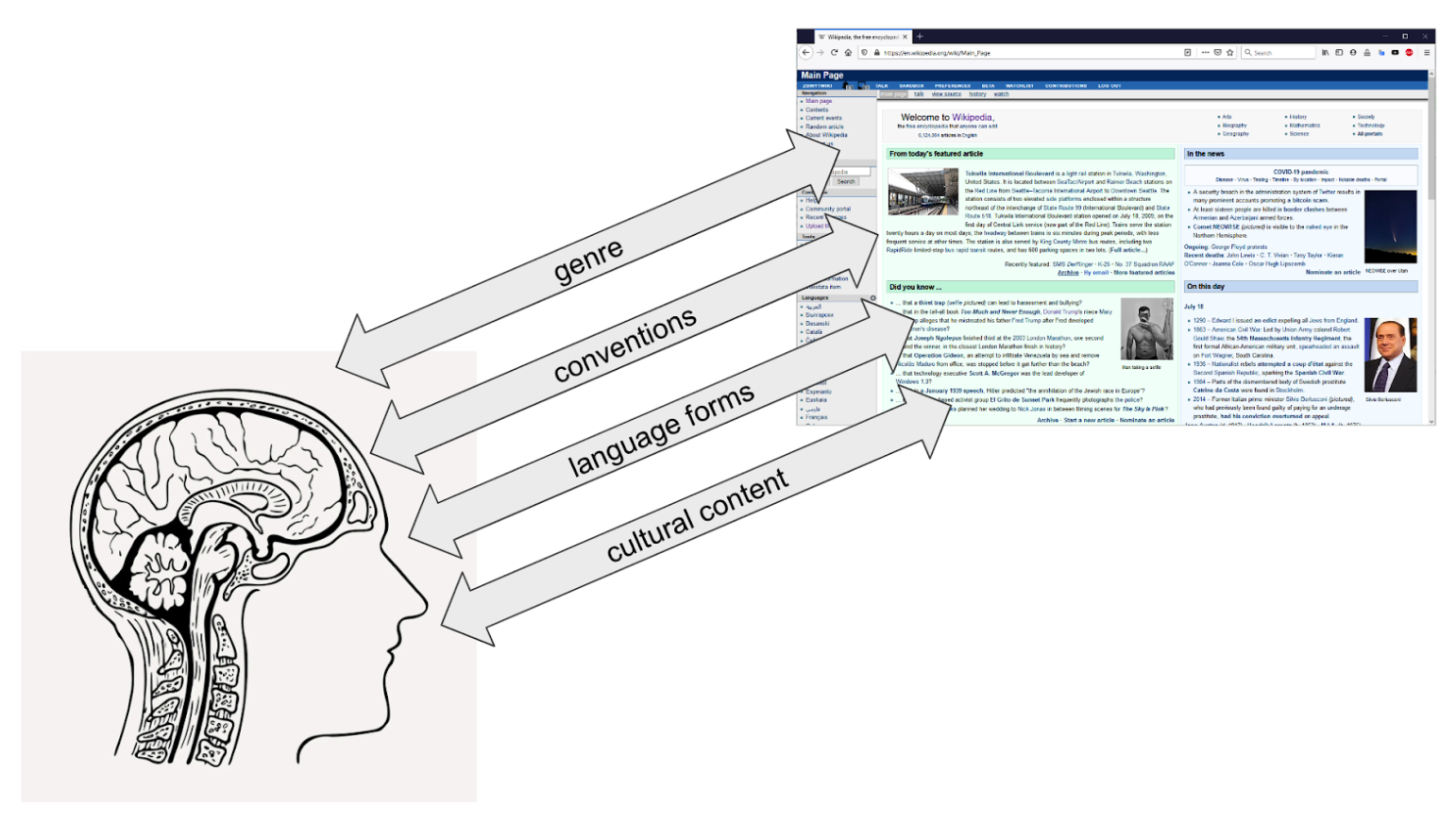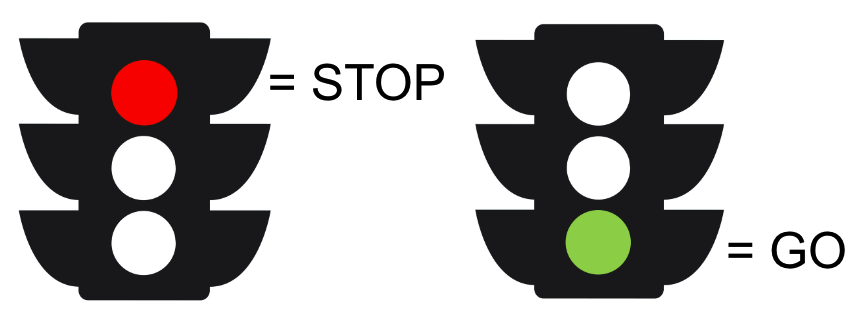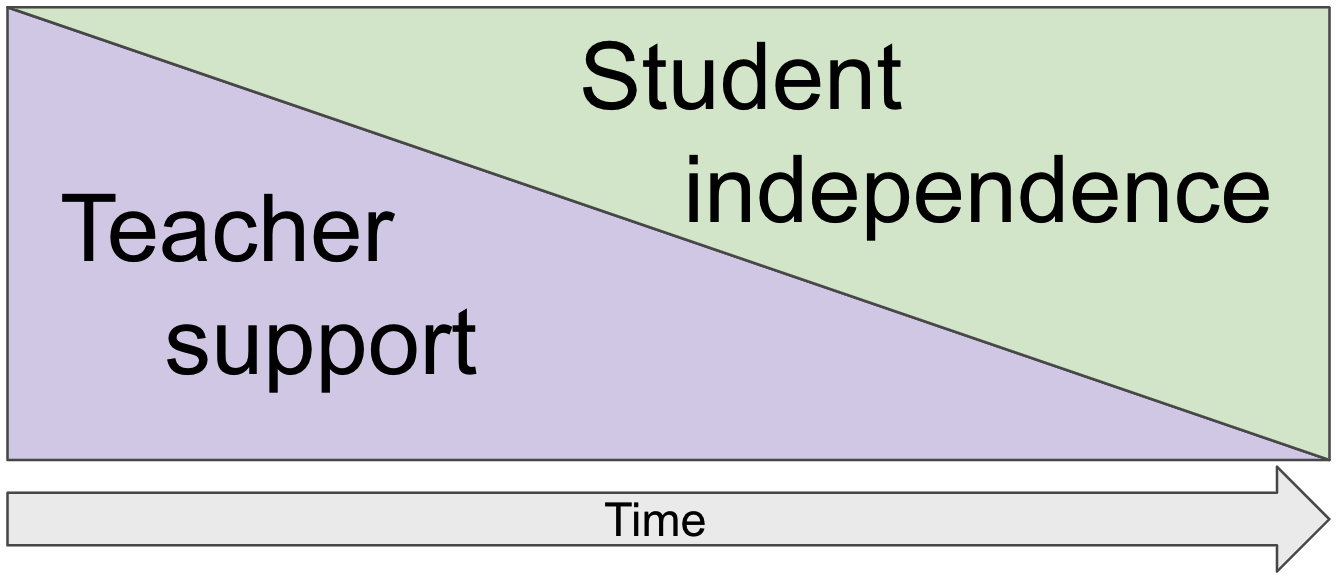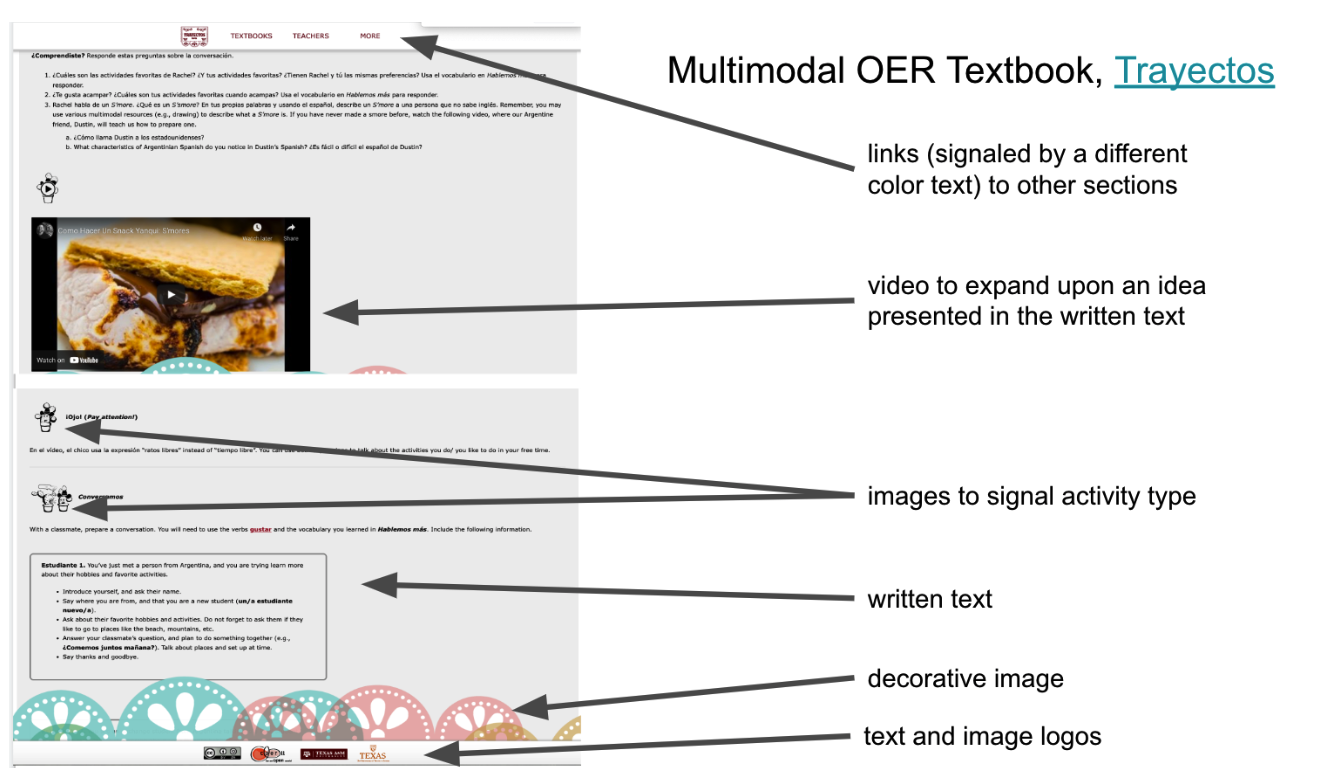Literacies Glossary
This page has the following sections:
- Foundational Literacies Concepts
- Multiliteracies Pedagogy
- Language Teaching Concepts Defined Through a Literacies Lens
TIPS:
- For a quick word search, use your browser's search box (Ctrl-F).
- During video playback, move your mouse out of the video to make the overlay text and buttons disappear.
- Click the word "YouTube" once you start a video to continue in a larger format. (Clip end points will not be respected.)
Foundational Literacies Concepts
foreign language literacies: The ability to interpret and transform target language texts; engage with texts of different modalities and genres; connect language and culture; and recognize the centrality of language in understanding diverse societies and perspectives. [Video: Paesani]Available Designs: Patterns and conventions of representation in a text, including language, conventions, and cultural content, referred to more generally as textual features. Also the linguistic, social, and cultural resources that individuals bring to the task of creating and interpreting texts. This textual features worksheet can guide you through identifying the Available Designs employed in a target language text.


conventions: One type of textual feature. Conventions are the accepted ways of using different meaning-making systems (e.g., language, sounds, images, gestures) to communicate messages in different text types. See, for example, the traffic lights at right.
cultural content: One type of textual feature. Includes the products, practices, and perspectives represented in a text, the meanings attributed to them, and the relationships among them. Cultural products, practices, and perspectives (PDF) are three interrelated components that further define cultural content:
cultural products: The tangible (e.g., books, films) or intangible (e.g., rituals, laws) creations of a particular culture.
cultural practices: Patterns of social interactions and behaviors (e.g., holiday traditions, meals).
cultural perspectives: The values, beliefs, attitudes, and philosophical perspectives of a society.
genre: Text types that possess particular patterns that are culturally situated and that users expect, understand, apply, and adapt. Genres common to language education include description, narration, personal recount, explanation, informational reports, and poetry
Additional details about these genres and others can be found on the Literacy Ideas website.language: One type of textual feature. The linguistic content of texts, including grammatical forms, vocabulary, pronunciation, prosody, spelling, metaphors and idiomatic phrases, pronoun referents, simple and complex sentences, and so on.
 interpretation: Understanding the gist or surface-level facts as well as critically examining cultural messages and viewpoints and the way language is used to express those messages and viewpoints.
interpretation: Understanding the gist or surface-level facts as well as critically examining cultural messages and viewpoints and the way language is used to express those messages and viewpoints.
multimodal/multimodality: The combination of written, audio, visual, or digital modes in a text.
text: Any concrete, observable product that communicates meaning; can be written, audio, audiovisual, visual, digital, or multimodal.
textual features: The interrelated building blocks, or meaning-making resources, of target language texts that reflect a text creator’s thinking and decision making. Include language, conventions, and cultural content. Also called Available Designs in multiliteracies parlance.
 Multiliteracies Pedagogy
Multiliteracies Pedagogy
knowledge processes: Four non-sequential, non-hierarchical activity types that comprise multiliteracies pedagogy; promote students’ foreign language literacies development and engage them in meaning design. [Click the icon at right for more information.]
experiencing: Learning through immersion in texts, activities, and social situations. Expressing thoughts, reactions, opinions, and feelings and gaining global comprehension about familiar or new experiences, objects, ideas, situations, perspectives, and ways of communicating. Does not involve deep reflection or analysis. One of the four knowledge processes of multiliteracies pedagogy. [Video: Kalantzis & Cope]
conceptualizing: Learning how language forms, conventions, organization, and other features of texts work to convey meaning. Unpacking texts, practicing skills and knowledge, and explicit learning about textual features helps learners participate more fully in communication. One of the four knowledge processes of multiliteracies pedagogy. [Video: Kalantzis & Cope]
analyzing: Learning by connecting the content of texts to social, cultural, and historical contexts. Questioning the meaning, importance, and consequences of textual content. Critically reflecting on textual content and its relationship to one’s own culture, perspectives, and learning. One of the four knowledge processes of multiliteracies pedagogy. [Video: Kalantzis & Cope]
applying: Learning by using new knowledge, skills, and understandings and by producing language in creative ways. One of the four knowledge processes of multiliteracies pedagogy. [Video: Kalantzis & Cope]
critical pedagogies: ways of teaching that equip students with the skills necessary to interrogate the knowledge they receive and create; to problematize their assumptions about language, culture, and individuals; and to transform societies through their dispositions and actions. [Video: Bernate]
multiliteracies pedagogy: An instructional approach that applies the concept of foreign language literacies in classroom instruction; prioritizes meaningful communication around target language texts and the language forms used to express ideas within those texts. This infographic compares and disentangles key concepts from multiliteracies pedagogy and communicative language teaching.
Language Teaching Concepts Defined Through a Literacies Lens
World-Readiness Standards for Learning Languages (commonly referred to as the 5Cs)
Collaboratively developed by numerous language teaching and learning organizations, the five Cs (communication, communities, comparisons, connections, and cultures) identify what competencies individuals need to communicate effectively in multilingual environments. ACTFL offers a summary document (PDF) and a video overview (YouTube) of the Standards.
Kern (2003, p. 8) summarized the five C goal statements to highlight their connections to literacies principles, indicated in italics below.
communication: "Understanding and interpreting written and spoken language on varied topics, communicating in meaningful and appropriate ways, taking audience and context into account."
interpersonal communication: Two-way interaction and meaning negotiation in spoken, written, or signed conversations. When students interact in this mode, they explore and negotiate relationships, shared assumptions, conventions, imagination, creativity, and emotions that are grounded in their understandings of the texts they interpret.
interpretive communication: Allows a reader, listener, or viewer to construct meaning (e.g., understand, interpret, analyze) from written, audio, audiovisual, digital, or visual texts. Engaging with texts in this way includes establishing literal understanding of basic information, making inferences, and analyzing cultural products, practices, and perspectives embedded in texts. Because this is a one-way communication mode, there is no possibility of meaning negotiation.
presentational communication: Sharing information and ideas to an (often) distant audience in order to inform, explain, persuade, or narrate on various topics. Learners also demonstrate awareness of communicative conventions relevant to the text type they are presenting. As with interpretive communication, there is no opportunity for meaning negotiation during oral and written presentational tasks.
communities: "Participating in multilingual communities at home and around the world for personal enjoyment and enrichment"; "relat[ing] to past and present worlds outside of our immediate community" through textual interaction; "examin[ing] the particular ways that language is used to capture and express ideas and experiences" within those communities.
comparisons: "Understanding the nature of language/culture through comparisons of the language/culture studied and their own."
connections: "Strengthening knowledge of other disciplines through language study--art, music, film studies, history, etc.; acquiring information and recognizing viewpoints available through the language and its cultures."
cultures: "Understanding relationships between the social practices, cultural products, and perspectives ... of people in the foreign culture."
language-content integration: Language learning through academic or cultural content. Language and content are seen as complementary, with the instructional focus shifting between the two depending on learning objectives, student needs, and so on to enhance the learning of both.

 scaffolding: Guided assistance by a peer or more capable other that focuses learners’ attention on a task, draws their attention to essential ideas or features, and keeps them motivated. Scaffolding is multifaceted and can relate to the structure of individual activities, the structure of a lesson, or the strategies a teacher uses to lead students through an activity or lesson.
scaffolding: Guided assistance by a peer or more capable other that focuses learners’ attention on a task, draws their attention to essential ideas or features, and keeps them motivated. Scaffolding is multifaceted and can relate to the structure of individual activities, the structure of a lesson, or the strategies a teacher uses to lead students through an activity or lesson.
target language text: Multimodal (i.e., reflect written, audio, audiovisual, visual, or digital modes or a combination of two or more of these modes), socially and culturally situated, and created for some real-world purpose other than language learning.
References
Bernate, E. (2020, September 28). Teaching and assessing grammar through critical pedagogy for Spanish heritage language [Webinar]. COERLL OER Hangout.
Cope, B., & Kalantzis, M. (2009). ‘Multiliteracies’: New literacies, new learning. Pedagogies, 4, 164-194.
Kalantzis, M., & Cope, B. (n.d.). Learning by design: Pedagogy. Works and Days.
Kalantzis, M., & Cope, B. (2016, February 1). Experiential and conceptual learning [Video file]. YouTube: Education at Illinois.
Kalantzis, M., & Cope, B. (2016, February 1). Analytical and applied learning [Video file]. YouTube: Education at Illinois.
Kalantzis, M., Cope, B., Chan, E., & Dalley-Trim, L. (2016). Literacies (2nd ed.). Cambridge University Press.
Kern, R. G. (2003). Literacy and advanced foreign language learning: Rethinking the curriculum. In H. Byrnes & H. H. Maxim (Eds.), Advanced foreign language learning: A challenge to college programs (pp. 2-18). Heinle.
Mac Donnchaidh, S. (n.d.). Text types and different styles of writing: The complete guide. Literacy ideas for teachers and students.
National Standards Collaborative Board. (2015). World-Readiness standards for learning languages. 4th ed. Author.
New London Group. (1996). A pedagogy of multiliteracies: Designing social futures. Harvard Educational Review, 66, 60-92.
Paesani, K. [CARLA]. (2020, April 16). Moving to multiliteracies: Tools to support teacher understanding [Video file]. YouTube: CARLA Presentation Series.
Paesani, K., Allen, H. W., & Dupuy, B. (2016). A multiliteracies framework for collegiate foreign language teaching. Pearson.
Paesani, K., Allen, H. W., & Dupuy, B. (2016, June 2). Multiliteracies framework for language teaching [video]. YouTube: ACTFL Webinar.
Credits
- All graphics were created by using and adapting public domain images (CC0 1.0 universal license).
- Trayectos is an open educational resource for beginning learners of Spanish developed by Gabriela Zapata and a team of students at Texas A&M. It is licensed under a CC BY-SA-4.0 license.

